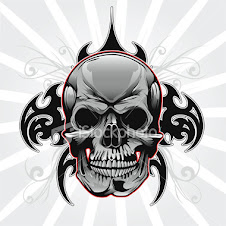In this worksheet, you will use the Internet, a newspaper, or a local store to gather information about the components you will need to complete your customer’s computer. Be prepared to discuss your selections.1.Your customer already owns the case described in the table below.
Brand and Model NumberCooler Master
CAC-T05-UW
FeaturesATX Mid Tower
ATX, Micro ATX compatible form factor
2 External 5.25” drive bays
2 External 3.5” drive bay
2 Internal 5.25” drive bays
7 expansion slots
USB, Firewire, Audio ports
Cost$45.00 - $56.00
Php. 2025.00 -Php. 2520.00
2.Search the Internet, a newspaper, or a local store to research a power supply compatible with the components that your customer owns. Enter the specifications in the table below.
Brand and Model NumberThermalTake
TR2 430 Watts Power Supply
Features•Form Factor: ATX
•Wattage: 430 Watts
•Fan: 80 mm
•+5V: 30 A
•+12V: 18 A
•-12V: 0.5 A
•-5V 0.8 A
•+5VSB: 2 A
•20 + 4 pin Connector: 1
•4 Pin P4: 1
•6 Pin PCI Express Connector: 1
•4 Pin Floopy Connector: 2
•4 Pin Peripheral Connector: 9
•SATA Power Connector: 2
Cost$41.00
Php. 1847.76
3.Your customer already owns the motherboard described in the table below.
Brand and Model NumberGIGABYTE
GA-965P-DS3
FeaturesLGA 775
DDR2 800
PCI Express x16
SATA 3.0Gb/s interface
1.8V-2.4V RAM voltage
1066/800/533MHz Front Side Bus
4 Memory Slots
Dual Channel Memory Supported
ATA100 connector
RAID 0/1
4 USB 2.0 ports
ATX Form Factor
Cost$138.00
Php. 6,210.00
4.Search the Internet, a newspaper, or a local store to research a CPU compatible with the components that your customer owns. Enter the specifications in the table below.
Brand and Model NumberIntel Core 2 Duo E 6600
Dual Core Processor
Features2.4 Ghz, 4 MB, 1066 Mhz,
FSB LGA 775. MPW: BX80557E6600
Cost$210.00 - $294.12
Php. 9,450.00 – Php. 13,230.00
5.Search the Internet, a newspaper, or a local store to research a cooling device compatible with the components that your customer owns. Enter the specifications in the table below.
Brand and Model NumberANTEC PRO 80 mm
PC Case Fan
Features80 mm, clear design,
Spins at 2600 RPM,
moves air at 34CFM
Cost$7.99
Php.359.55
6.Search the Internet, a newspaper, or a local store to research RAM compatible with the components that your customer owns. Enter the specifications in the table below.
Brand and Model Number KINGSTON 2GB PC 2-5300 DDR2 RAM (KVR667D2N5K226)
Features2 x 1 GB, Non EEC unbuffered PC2-5300
DDR2 RAM, 667 Mhz, CL5, DIMM 240 Pin
Cost$41.00 - $53.00
Php.1845.00 – Php. 2385.00
7.Your customer already owns the hard disk drive described in the table below.
Brand and Model Number Seagate ST3400620AS
Features400 GB
7200 RPM
16 MB Cache
SATA 3.0Gb/s interface
Cost$119.99
Php 8999.55
8.Search the Internet, a newspaper, or a local store to research a video adapter card compatible with the components that your customer owns. Enter the specifications in the table below.
Brand and Model NumbereVGA – e – GeForce 8600 GT 256 MB PCI Express Graphic Card
FeaturesCore Clock: 540 Mhz
Memory Clock: 1.4 Ghz.
6DDR3: SDRAM 128 Bit
HDTV Out
Cost$69.00
Php. 3105.00
Questions1.List three components that must have the same or compatible form factor.
•CPU
•Motherboard
•RAM
2.List three components that must conform to the same socket type.
•Motherboard
•Heat Sink/ Fan
•CPU
3.List two components that must utilize the same front side bus speed.
•CPU
•Motherboard
4.List three considerations when you choose memory.
•Price
•Capacity
•If dual Channel is Available
5.What component must be compatible with every other component of the computer?
•Motherboard



